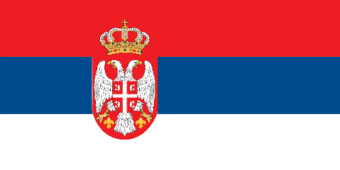

Venice Commission - Report on Bicameralism
www.venice.coe.int
Disclaimer: this information was gathered by the Secretariat of the Venice Commission on the basis of contributions by the members of the Venice Commission, and complemented with information available from various open sources (academic articles, legal blogs, official information web-sites etc.).
Every effort was made to provide accurate and up-to-date information. For further details please visit our site : https://www.venice.coe.int/
1.Has the country ever had a bicameral parliamentary (or congressional) system in the past? If so, in which period? Why was it decided to change into a unicameral system? Is there a public debate about changing to a bicameral system? What are the terms of the debate?
Always unicameralism. From the beginning of the 19th century, National Assembly sessions were called by Serbian monarchs. Sessions were also held during the First and Second Serbian uprising.The members were not elected, but rather appointed by the monarch, and sessions were usually held in open space, in which a couple of thousand members could participate. One of the major groups at this point of time, were the conservative Defenders of the Constitution who were initially allied with the Karađorđević dynasty.[5] After the overthrow of Obrenović dynasty in 1842, they held a majority in the parliament.[6]
2.What is the population of the country? What is its size?
88,499 km2 ; 6,647,003 inhab.
3.What form of state and form of government has the country? Please provide details with reference to relevant constitutional provisions. a) Unitarian or federal/regional/other form of decentralization; b) Parliamentary, presidential, semi-presidential or mixed
Serbia is a parliamentary republic, with the government divided into legislative, executive, and judiciary branches. Serbia had one of the first modern constitutions in Europe, the 1835 Constitution (known as the Sretenje Constitution), which was at the time considered among the most progressive and liberal constitutions in Europe. Since then it has adopted 10 different constitutions. The current constitution was adopted in 2006 in the aftermath of the Montenegro independence referendum which by consequence renewed the independence of Serbia itself
4.How many members are in the lower house?
250 seats
 Serbia
Serbia
Ilija Garašanin, who was one of the members of the conservative group, called for the adoption of a law that would officially form the National Assembly.This was done in December 1858, when the Saint Andrew's Day Assembly was established Its first name was also adopted at the assembly, which was the "Serbian National Assembly".After the adoption, sessions were initially held every three years, although this was later changed over the time, and later sessions were either held once a year, or once every three or four years.The first law regarding MPs was adopted in 1870.